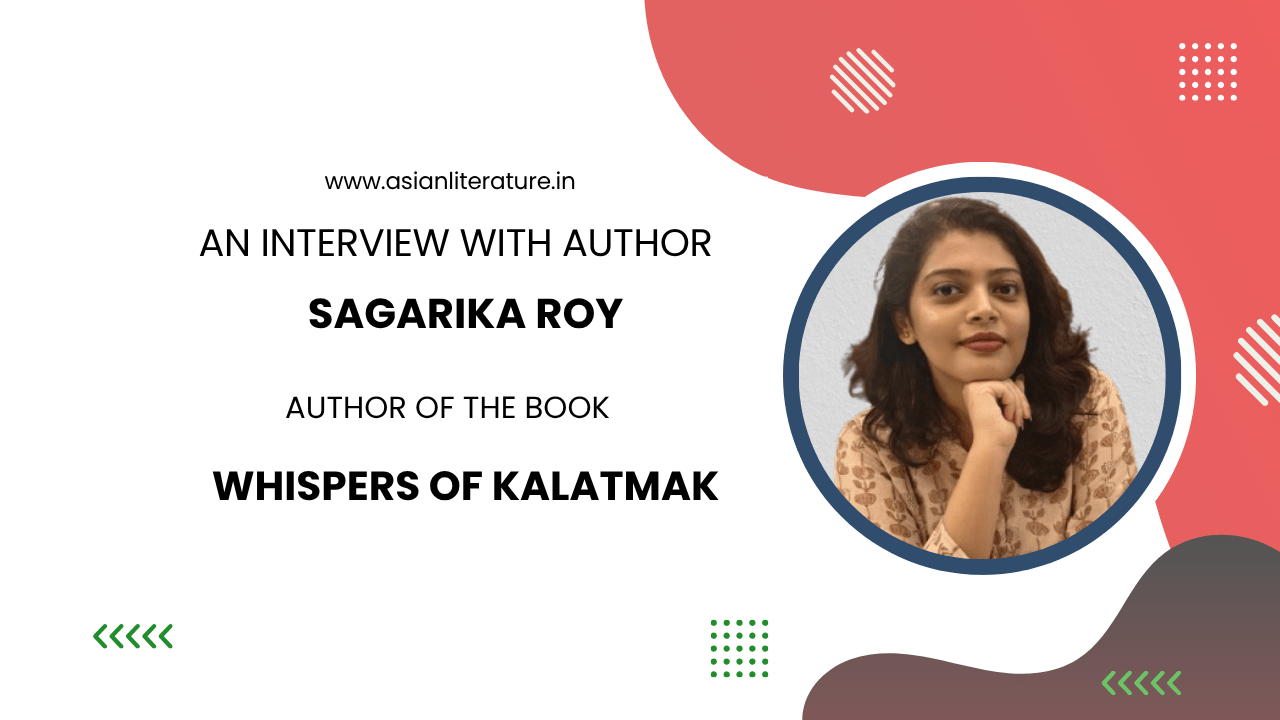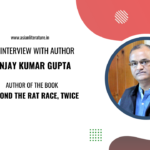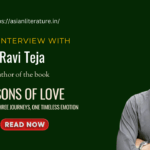
Sagarika Roy
Sagarika Roy has a master’s degree in English literature from the University of Calcutta. Over the past three years, she has worked as a content writer and editor, developing a deep understanding of how to craft compelling narratives.
Writing has been her passion for as long as she can remember. From her college days, she actively participated in various writing competitions, exploring her voice and experimenting with different forms of storytelling. Whispers of Kalatmak, her debut novel, marks the beginning of her journey into fiction, where she blends her love for language with her fascination for human emotions, folklore, and gender dynamics.
Born in Kolkata, Sagarika spent much of her childhood in Hyderabad and Mumbai before returning to her birthplace, where she is currently based. Her diverse upbringing across cities has given her a nuanced perspective on people, cultures, and places. Outside of her professional and creative work, Sagarika is a coffee enthusiast who believes a perfect brew can spark the best ideas. She is also an avid traveller, constantly seeking inspiration from new places.
With Whispers of Kalatmak, Sagarika invites readers into a world shaped by her love for storytelling and her belief in the magic of words. This book is just the first chapter of many she hopes to share with the world.
Lets start The Interview
1. Origin of the Story
What first inspired the idea of Kalatmak—the “cursed” village—and how did that spark grow into a full novel?
Author: I have always been an avid reader, and this whole idea of curse, myth, and the kind of stories that lie in the forgotten corners of history has always intrigued me. The sparks for ‘Whispers of Kalatmak’ came when I first read about Bhangarh Fort in Rajasthan and the eerie legends surrounding it. Thereafter, a friend of mine told me about Kuldhara, an abandoned village steeped in mystery. Those tales stirred something in me, and I wanted to write something about the power of folklore. One idea led to another, and slowly, Kalatmak began to take shape in my mind. What started as a curiosity about myths and curses, grew into the world of my novel.
2. Blending Myth and Reality
Your book balances supernatural whispers with very real social issues. How did you decide how much mystery to reveal versus leave unexplained?
Author: For me, the heart of Whispers of Kalatmak was never fully supernatural; it was about how myths and fears can mirror real-life struggles in society. While writing, I wanted the supernatural elements to feel like whispers, always present but never fully explained. You see, that’s how folklores often live in communities – half-truths, half-mysteries. At the same time, I had to make sure that the social issues like fear, prejudice, misogyny, and silencing of voices were clear and tangible. Striking that balance meant revealing just enough of the mystery to keep readers unsettled, but also leaving space for imagination.
3. Creating Aarusha
Aarusha’s journey feels both intimate and universal. Is she based on anyone you know, or does she embody parts of yourself?
Author: Aarusha is not based on any particular person as such. She carries fragments of many voices in her, of women I have seen, stories I have heard, and yes, a bit of myself as well. She symbolizes the quiet strength of those who are often overlooked and the struggle of finding one’s voice. In that sense, she’s both personal and universal at the same time. Through her, I wanted to explore resilience, vulnerability, and courage. So, while she may not be a particular person, she represents everyone who has dared to dream and break free from conventionality.
4. Research and Immersion
The setting feels authentic—from Rajasthan’s desert landscapes to village customs. What kind of research or travel did you undertake to capture these details?
Author: Authenticity was very important to me while I was building Kalatmak. I wanted my readers to feel the dryness of the desert, the chill of the wind, the customs of the people there, and their everyday struggles. I wanted to depict an authentic village lifestyle. While I could not travel due to my work schedule, I dedicated long hours to online research. I read several blogs on the ecosystem in Rajasthan, the local food, and the struggles faced in the villages. Also, I read historical accounts of Rajasthan’s haunted sites like Bhangarh Fort and Kuldhara. One of my close friends belongs to Rajasthan, and she helped me a lot with topics related to dialects, cuisines, customs, etc. Her help played a very special role in giving authentic details of desert life. In the end, it was a blend of research, lived impressions, and imagination that helped me bring the setting to life.
5. Women’s Voices Across Generations
The bond between Aarusha and her grandmother, and later with Amba Mai, is central to the novel. What drew you to explore these intergenerational relationships?
Author: I have always believed that old people, especially women, are powerhouses of knowledge and wisdom. Their wisdom is nothing compared to the books we read. A lot of times, a simple chat with them can open up newer avenues of understanding for us. In many families, especially in close-knit villages, grandmothers are the keepers of traditions and memory, shaping how the younger ones see the world. With Aarusha, I wanted to show how this bond can be both comforting and confining, filled with love yet threaded with inherited silence. While Aarusha’s grandmother comforted her, she was also one of the major factors leading to Aarusha’s self-discovery. Amba Mai, on the other hand, represented inherited silence and how this silence can stiffen one’s sense of reality. Exploring these intergenerational relationships allowed me to show how women can influence, burden, and ultimately liberate each other.
6. Themes of Freedom and Choice
At its heart, the book is about carving one’s own path. How have your personal experiences shaped this theme of self-determination?
Author: I think the idea of self-determination is something that I have carried within myself for a very long time. While I come from a liberal family, there have been instances where expectations, whether from society, traditions, or even self-doubt, felt heavier than my voice. Writing this book was, in many ways, an act of carving my own path, too. My personal journey of learning to trust my instincts, even when the road felt uncertain, naturally found its way into this story.
7. Craft and Process
Did you follow a structured writing schedule, or did the story unfold more organically over time?
Author: I would have loved to say that I had a structured writing schedule, but honestly, the story unfolded more organically. On some days, I would have this rush of ideas in me, and words would keep flowing on the screen. But there were also days when my mind would go completely blank. No idea, no words would come out of my mind then. Sometimes, I would write late into the night, gulping down black coffee, and sometimes go blank for maybe a week. What kept me going was the world of Kalatmak itself, which kept pulling me back. I did set small goals to be on track, but also allowed the story to take its shape and surprise me.
8. Challenges in Writing a Debut
What was the most difficult aspect of bringing your first novel to life—finding your voice, revising the manuscript, or something else entirely?
Author: The most difficult aspect of bringing my first novel to life was learning to trust my own voice. As a debut author, there is this voice in your head that constantly questions the worth of your story. Is this good enough? What if nobody reads my book? Will anybody connect with it? At such a time, I had to constantly motivate myself and believe in my creativity. I had to remind myself why I was writing this novel in the first place. Of course, revising and editing the raw draft into an immersive manuscript took both time and patience. But I would say, it was the emotional weight of staying with the story, through all its dark turns and silences, that tested me. In the end, those struggles, however, became a part of the journey because just like Aarusha, I too had to carve my own path as a writer.
9. Reader Takeaways
What do you hope readers feel or think about after closing the final page?
Author: More than anything, I hope readers carry a piece of Kalatmak with them. If Aarusha’s journey leaves readers with a spark of hope and that they, too, can carve their own path or break free from confinement, then I feel the story has done its work.
10. Looking Ahead
Can you share any hints about your next project? Will you continue exploring folklore and women’s stories, or venture into a completely new direction?
Author: I think it’s too early to tell about this. The joy of being a published author has not yet completely sunk in. So, I do not have any particular plans as such, but the tension between the familiar and unknown will continue to play an important role in my future works as well.
Book By Sagarika Roy : Whispers of Kalatmak
Publisher: Evincepub Publishing

